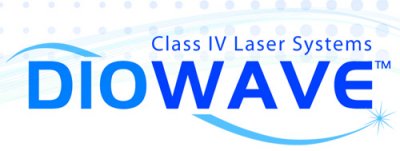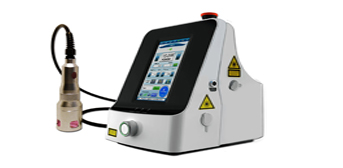
What is the DIOWAVE LASER?
It’s an FDA cleared Class 4 prescription medical device. It causes a photochemical reaction that increases ATP production (fuel of the cell). It is more powerful, which in turn delivers more energy to the treatment area.
DIOWAVE Laser Therapy is a safe and effective treatment to:
- Reduce pain
- Decrease inflammation
- Enhance tissue healing of tissue and bone
- By enhancing arterial microcirculation which brings more red blood cells to the area.
- Increases venous and lymphatic drainage from the area.
- Increases oxygenation of the tissues.
- Stimulates the hemoglobin molecule of the red blood cell to dump oxygen at the healing site (speeds up healing).
- Increases the energy of injured or sick cells so they function at a higher level.
- 10 to 20 minutes depending on the area and condition
- Typically 6 to 12 visits. Pain may drop dramatically after 1 to2 visits. It is important to understand absence of pain does not mean the presence of health. There is still underlying tissue damage. Follow up with the recommended treatments.
- Decreases inflammation internally.
- Decreases tissue irritants (helps decrease pain).
- Stimulates blood flow to the area to help the body heal the damaged disc.
Advantages of DIOWAVE Laser Therapy:
- Requires no use of surgery or drugs.
- No dangerous side effects or risks.
- DIOWAVE Laser Therapy provides enhanced treatment outcomes faster than any other treatment modality.
- Soothing, Non-Invasive and works IMMEDIATELY!!!
- CAN BE USED OVER METAL IMPLANTS.
- Helps your injuries heal rather than just mask the pain.
- Vasodilation of tissues (some redness may occur).
- Release of tissue irritants. Sometimes soreness after a treatment may be noticed. This is due to the release of metabolic waste (from trigger points) released from the area of the body.
 |
Additional conditions treated with Diowave Laser Therapy are:
- Acute Disc herniation / Bulging disc resulting in Radiculopathy, Foot drop, numbness or tingling.
- Tendonitis / Bursitis
- TMJ
- Joint pain (arthritis, sports injuries, painful stiff joints, and many more)
- Sprain / Strain injuries (whiplash, pulled Muscles, Muscle spasms, injuries related to auto accidents).
- Nerve pain
- Trigger points and Muscle spasms
- Non-healing wounds / Pain and healing following surgery
- Frozen Shoulder / Shoulder Pain. Even post-surgical.
- Carpal Tunnel
- Repetitive Stress injuries



